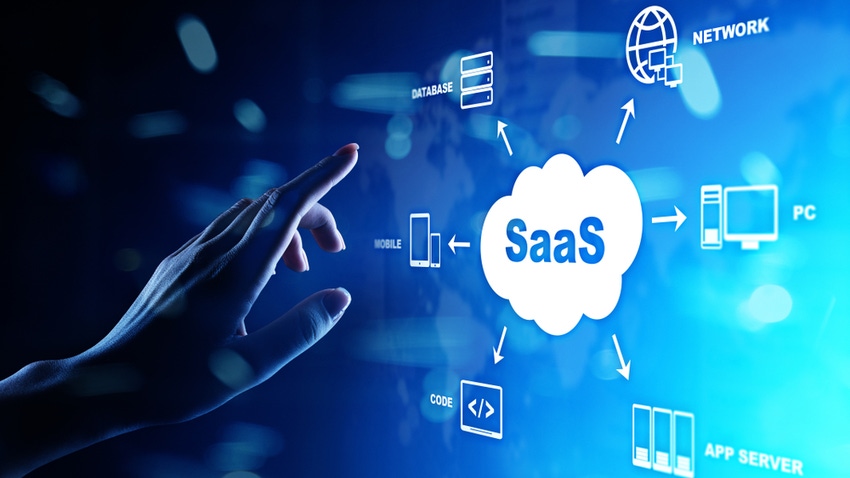How Much Is a SaaS Business Worth?
Low churn rate and monthly recurring revenue metrics can help determine market price.
February 7, 2022

By Stefano Endrizzi

Stefano Endrizzi
Software as a service (SaaS), a way of delivering utilities and applications over the internet, offers the possibility of easy global access to a large network of applications without having to purchase and install a software on a single computer. It allows everyone to have access to a large network of software and virtual services by paying a fixed price, usually in form of a monthly payment.
There was a great deal of merger and acquisition activity last year, and it’s continuing apace this year as well. Many entrepreneurs, consultants and advisers are wondering — how much is a SaaS business worth?
Valuing a Company
The valuation of a company depends on a large number of factors and elements. Valuing a SaaS business can be even more difficult, given there are more factors to be taken into consideration compared to traditional brick-and-mortar businesses.
Businesses valued under $10 million are usually valued using a multiple of EBITDA (earnings before interest, taxes, depreciation and amortization), which is a measure of company profitability. The balance sheet, the list of assets, intellectual property (IP) and agreements in place also are taken into consideration.
In some situations when valuing a company, advisers and consultants consider the SDE (seller discretionary earnings), which is equal to the revenue left to the company owner after deducting all operating and personal expenses from the gross revenue. A valuation based on EBITDA or SDE helps potential purchasers or investors to understand the cash flow they will receive by running the business.
This approach can be applied only to small companies, given that in larger public and private organization the company structure is more sophisticated, especially when there are strategies to optimize and minimize the tax liability by using creative accounting.
Taking into consideration the small- and medium-sized enterprises (SMEs) – companies defined as businesses with a maximum number of employees of around 250 – we can consider the SDE or EBITDA as the best method to value a company.
For highly profitable companies, it’s useful to use business valuations methods such as comparable market value, asset-based, ROI-based, discounted cash flow (DCF), capitalization of earnings and book value.
For SaaS companies, this can be a significant limitation, given that these companies are usually at the early stage of growth and are reinvesting their revenue back into the business.
As discussed, for small private companies, using a multiple to determine the company value is one of the most effective ways to arrive at a market price. This multiple will be also affected (increased or decreased) by a large number of factors depending on: financial performance, operations, product and market, niches, customers base, geography, age of the business, owner involvement; CAGR and growth; churn; and other SaaS metrics.
According to market analysis of the last 10 years, SaaS businesses typically sell for 3.0x – 12.00x annual profit (EBITDA) range, depending on many of the variables discussed above.
A highly valuable SaaS company is one with a long track record where the owner isn’t really involved in the daily operations and which has a favorable trend with low churn, lifetime value (LTV) and customer retention.
Valuation Metrics
While the general valuation drivers above are a key consideration, it’s important to note that every SaaS company is unique and each has its own priorities in terms of metrics.
Churn is an important element to take into consideration while valuing a SaaS company. A low churn is synonymous with growth and improving revenue. A high churn rate has all the inverse effects and can also say to investors that the product doesn’t adequately fit the customer’s needs. According to multiple studies and research, an acceptable churn rate for a young SAAS model is a company with a rate in the 3-5% range annually, this range has to decline in the 1-3% range after the company reaches a midmarket position.
Another key element to consider in evaluating a SAAS model but also other companies is to determine the customer acquisition cost (CAC), which is defined as the total marketing and sales cost to acquire one additional customer. The lower this number is the better, as that would mean you are spending less to acquire customers. This element is combined with the customer lifetime value (LTV), identified as the average amount of revenue that is earned from a customer throughout the time they are paying for the service. The higher the LTV is, the more valuable each new customer is to the business.
Other Considerations
Apart from SaaS metrics such as CAC and LTV, various other factors need to be considered in the valuation process.
Additional things to consider while making a proper valuation of a SaaS company are factors related to the customer acquisition channel (organic, affiliate, paid or other channel). A company with a large number of acquisition channels is more stable than a company focusing only on one channel. Other elements important to the customer’s acquisition strategy are related to channel competition and the conversion rate and cost involved.
Stefano Endrizzi is founder of MergersCorp M&A International, a lower middle-market mergers and acquisitions advisory brand. He also is a senior mergers and acquisition-investment banking adviser, serial entrepreneur and management consultant with more than 15 years international experience. You may follow him on LinkedIn or @mergerscorp on Twitter.
Read more about:
MSPsYou May Also Like
